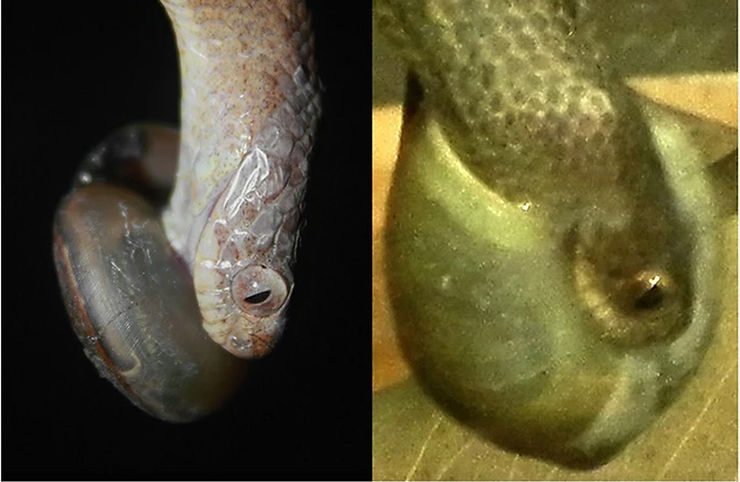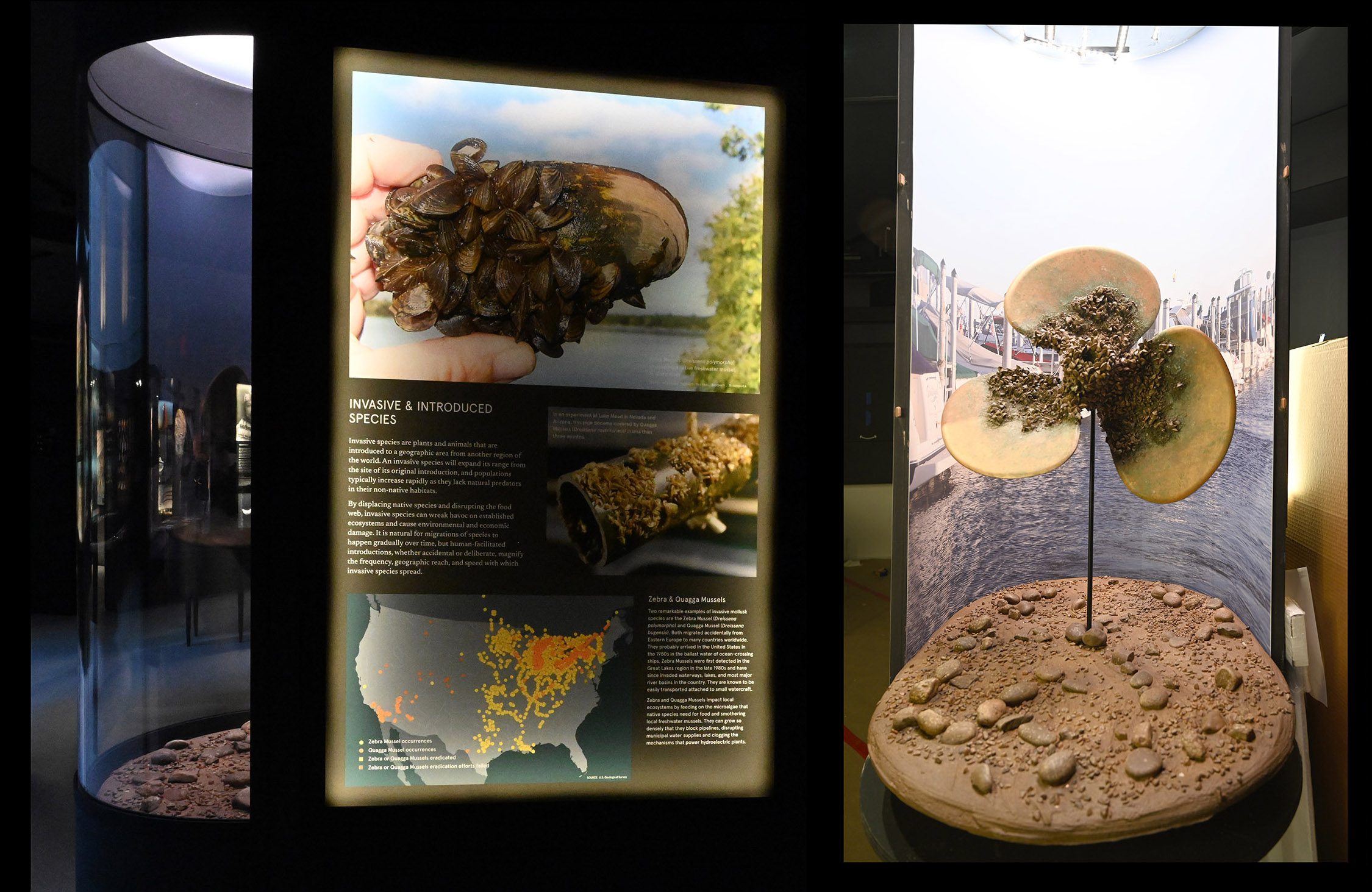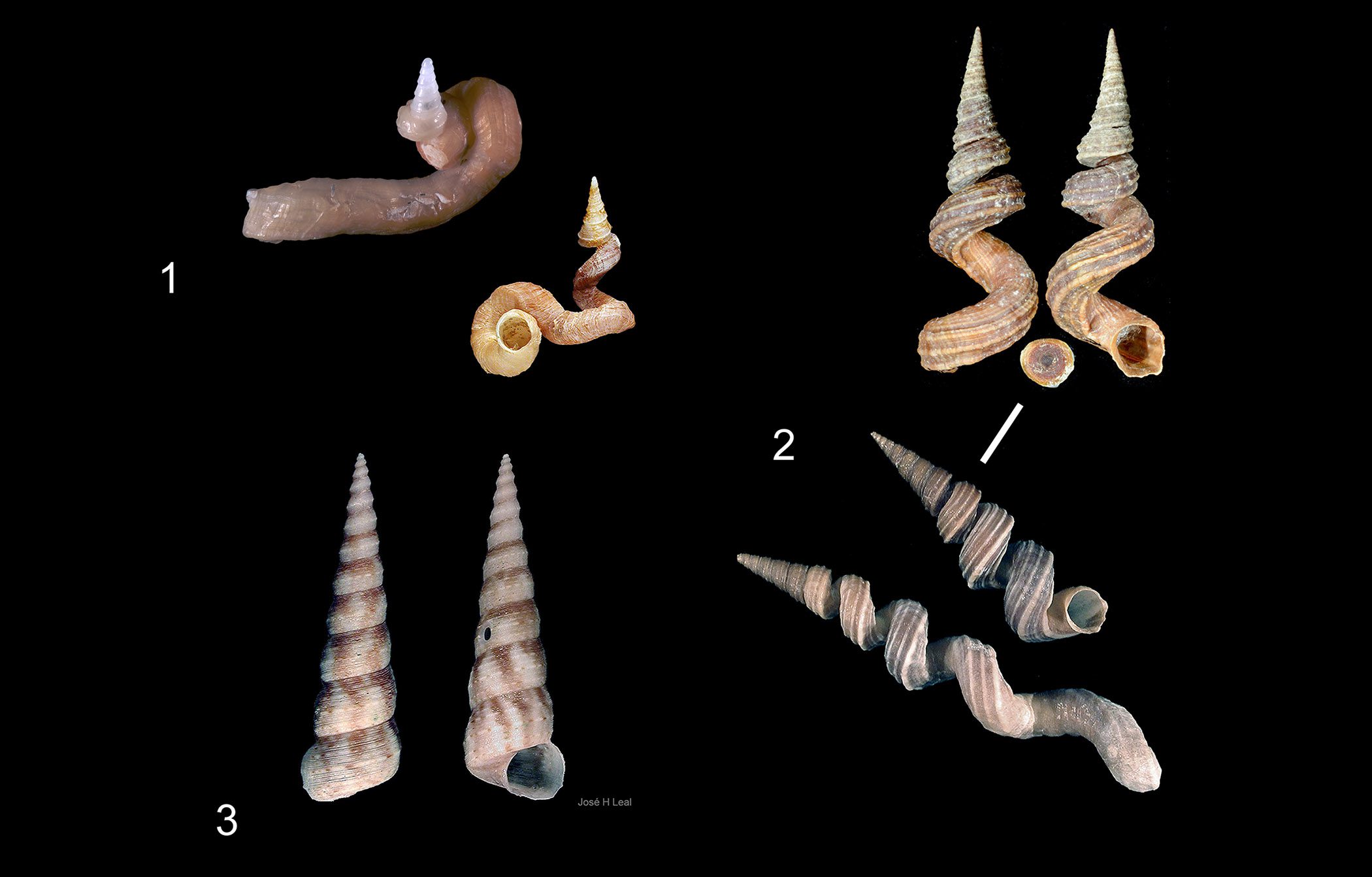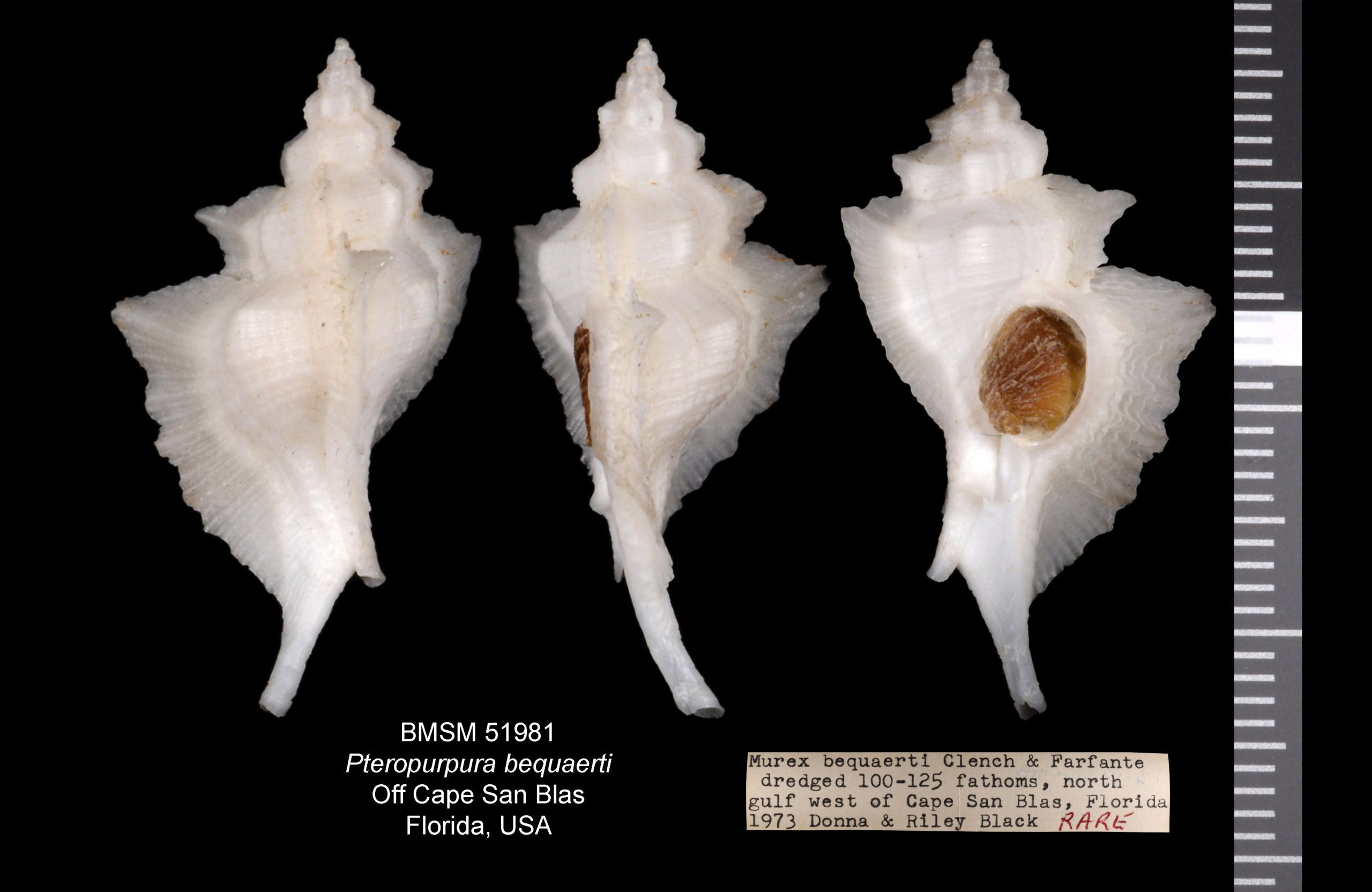As discussed previously in this blog, most snail species coil to the right (dextral), and a few, such as the local Lightning Whelk, coil to the left (sinistral). In a few species of land snails, however, there seems to be as many dextral individuals as there are sinistral ones. Switch gears to snail-eating snakes: As their common name suggests, Southeast Asian snail-eating snakes in the genus Pareas evolved to prey on snails, and do it by initially biting onto the outer rim (the “outer lip”) of the shell opening (the “aperture”). Snakes strike at their snail prey by tilting the head leftward only, and attempt to capture it in this same manner, irrespective of the coiling direction in the snails’ shells. Accordingly, Pareas iwasakii have more teeth on their right mandible, which indicates, given their manner of feeding, that they evolved to prey mainly on snails with dextral versus sinistral shells. In a 2016 paper published in Nature Scientific Reports, Patchara Dnisawadi from the Chulalongkorn University in Bangkok, Thailand, and collaborators have proposed that the snails have evolutionarily “responded” by recurrent reversal in coiling, prompting the evolution of sinistral prey in tandem with dextral ones in the areas where the snakes live. Although the article is about four years old, I thought it would be a nice complement to recent discussions in this forum and elsewhere about the reasons driving snail “handedness.” Read the article here.
 Snake handling dextral (on left) and sinistral shell (right). Attempts of the latter kind are usually not well-succeeded.
Snake handling dextral (on left) and sinistral shell (right). Attempts of the latter kind are usually not well-succeeded.


